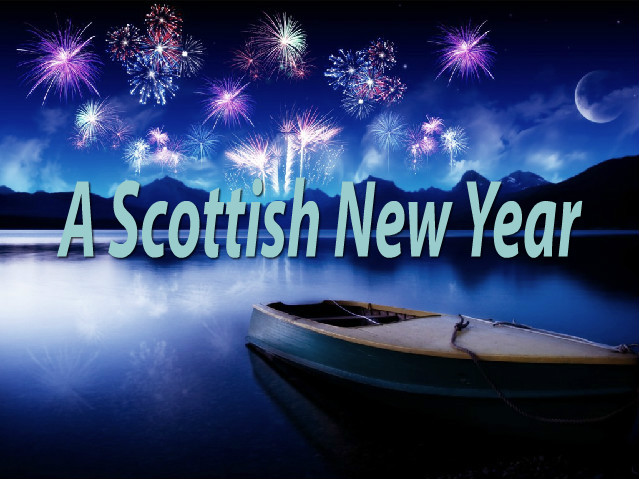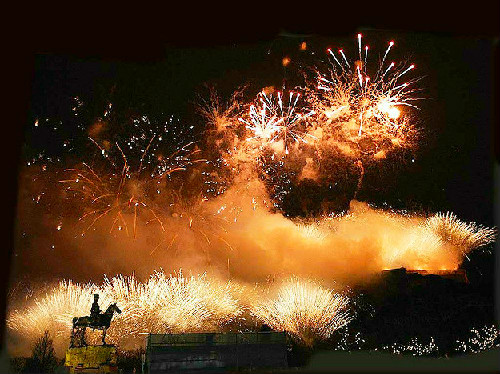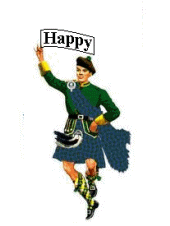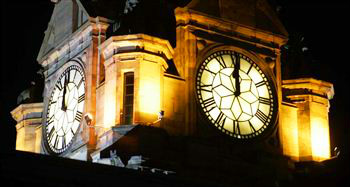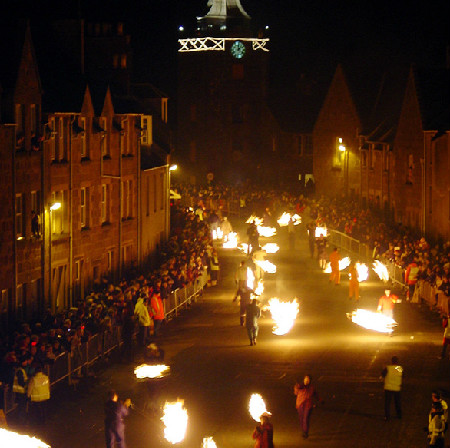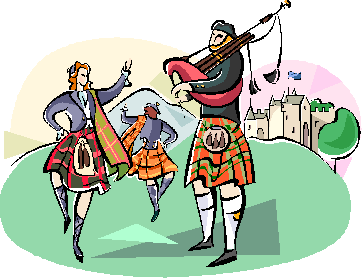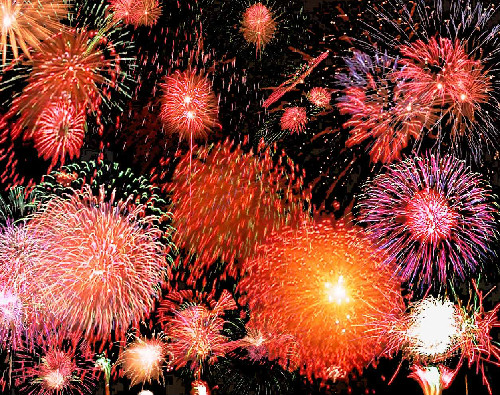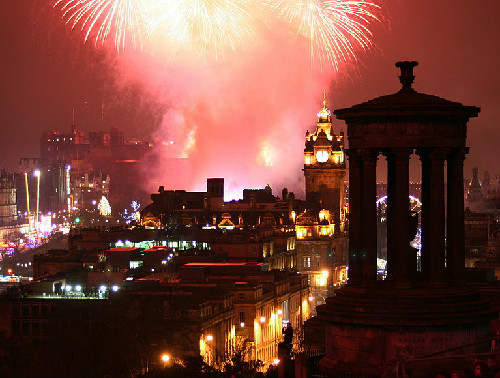
| I Gi' Ye Wishes For A Guid New Year An' Many More May You See |

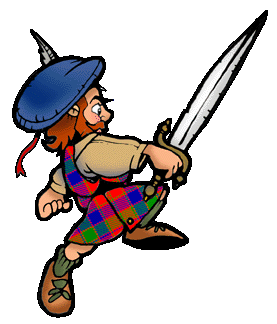
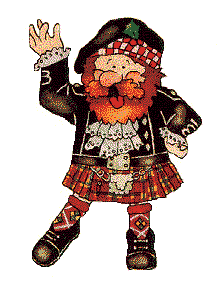

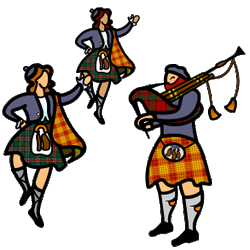
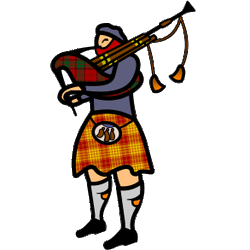
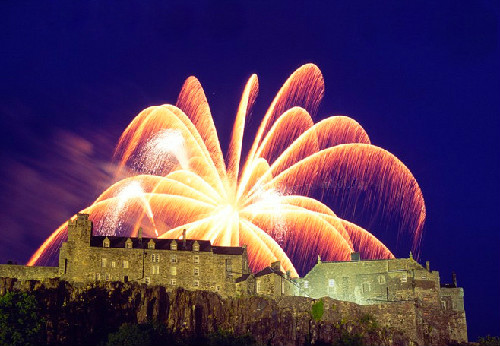
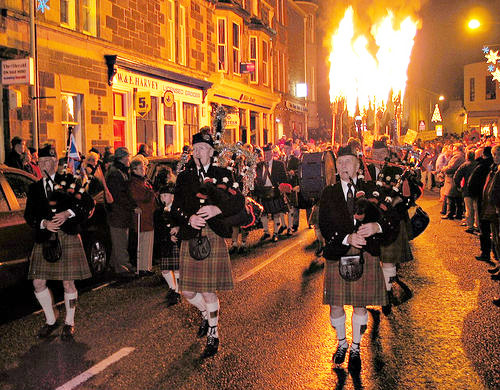
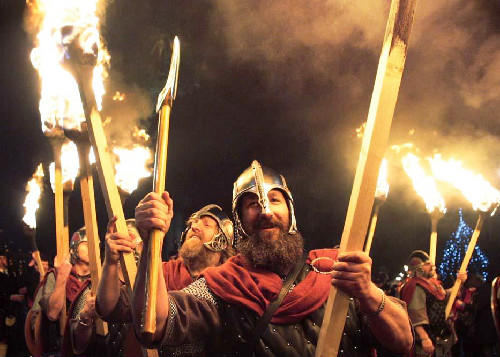
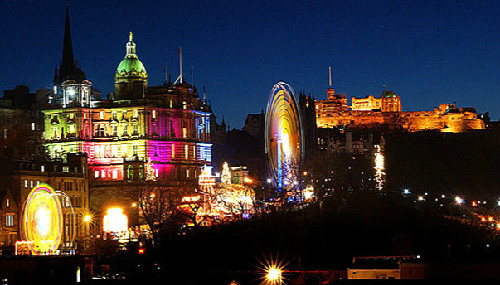
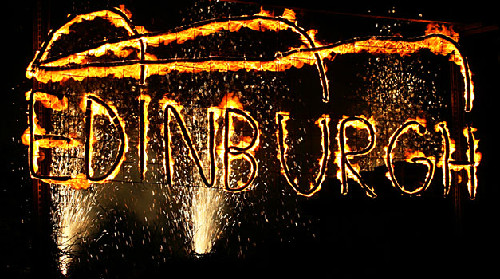
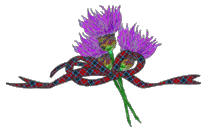
Scotland's festive and unique new year celebration,
Hogmanay, has a history that reaches back to the
Norse Winter Solstice and incorporates traditions from
the Gaelic Samhain and the Viking Yule. And, all along
the way, each region of Scotland has added and
adapted its own distinctive customs.
Events range from huge festivals of several days'
duration in larger cities, to village ceilidhs, bonfires
and torch processions, to celebrations such as
Stonehaven's unique fireball-swinging parade.
Some old customs have been lost, but many survive.
Hogmanay lives on and continues to attract visitors
from all over the world.
Hogmanay, has a history that reaches back to the
Norse Winter Solstice and incorporates traditions from
the Gaelic Samhain and the Viking Yule. And, all along
the way, each region of Scotland has added and
adapted its own distinctive customs.
Events range from huge festivals of several days'
duration in larger cities, to village ceilidhs, bonfires
and torch processions, to celebrations such as
Stonehaven's unique fireball-swinging parade.
Some old customs have been lost, but many survive.
Hogmanay lives on and continues to attract visitors
from all over the world.
| Fireworks over Stirling Castle |

| Edinburgh's torchlight procession, with participants dressed as Vikings One of the strongest influences on Hogmanay comes from the ancient Norse winter festival of Yule. |
| Parade in Perthshire |
| The etymology of the word "Hogmanay" is uncertain, but theories abound. It may have come from the Norman French "hoguinane" or "hoguignetes" (traditional New Year's gifts) or the French "homme est ne" (man is born). Other possibilities include "Hoggo-nott," the Scandinavian word for the feast preceding Yule; the Gaelic expression "oge maidne" (new morning); the Flemish "hoot min dag" (day of great love) or the Anglo-Saxon "haleg monath" (holy month). Regardless of its origin, Hogmanay's been integral to the Scots' culture for many centuries. |
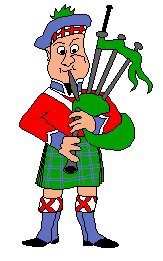
| Edinburgh fireworks |
Having observed the flambeaux at New Orleans' Mardi Gras night parades all my life,
I thought I knew a little something about people using fire to entertain parade-goers. I
admit to always feeling just a bit uneasy being in very close proximity to the flambeaux,
but, from now on, after watching a video of the Stonehaven fireball-swingers, standing
on the front line of a Mardi Gras parade should seem quite cozy and safe to me.
At the stroke of midnight, the fireball-swingers make their way through town, swinging
large fireballs around and above their heads. To the accompaniment of the pipes and
drums, they march to the harbor, where the balls are thrown into the sea. This
ceremony's origin may be traced back to a 19th century fishermen's festival. However,
like most of Scotland's fire festivals, it probably has Celtic or pagan beginnings and
was intended to drive out evil spirits and, in the case of Hogmanay, welcome the
spirits of the new year.
On the Fireball Association's website, I notice there is an urgent appeal for qualified
first aiders to volunteer for the event. All things considered, I believe I'd rather watch
this particular procession from the security of a second-story window. :-)
I thought I knew a little something about people using fire to entertain parade-goers. I
admit to always feeling just a bit uneasy being in very close proximity to the flambeaux,
but, from now on, after watching a video of the Stonehaven fireball-swingers, standing
on the front line of a Mardi Gras parade should seem quite cozy and safe to me.
At the stroke of midnight, the fireball-swingers make their way through town, swinging
large fireballs around and above their heads. To the accompaniment of the pipes and
drums, they march to the harbor, where the balls are thrown into the sea. This
ceremony's origin may be traced back to a 19th century fishermen's festival. However,
like most of Scotland's fire festivals, it probably has Celtic or pagan beginnings and
was intended to drive out evil spirits and, in the case of Hogmanay, welcome the
spirits of the new year.
On the Fireball Association's website, I notice there is an urgent appeal for qualified
first aiders to volunteer for the event. All things considered, I believe I'd rather watch
this particular procession from the security of a second-story window. :-)
| Edinburgh's Hogmanay Carnival |

| As in other places, some of the old Scottish customs are disappearing as time goes by. But many communities still retain their own distinctive ways of celebrating Hogmanay. Below are a few old traditions. |

| One tradition required that the first person to cross the threshold on the first day of the new year should come bearing the symbolic gifts of coal, shortbread, whiskey or black bun (a type of fruitcake) for good luck. For luck to hold, the person should be a tall, dark stranger. (The requirement for dark hair, it's thought, echoes a time when a blonde-haired stranger meant a visit from Viking raiders - which, needless to say, wasn't good luck at all.) |
| Edinburgh's New Year's fireworks display is considered one of the biggest and best in the world. |
| During the day of Hogmanay the household would be cleaned so that the New Year could be welcomed into a tidy house. Fireplaces would be swept out and some people would read the ashes of the last fire of the year to see what the New Year might hold. Debts would be paid - it was considered bad luck to see in the new year with a debt. |
| Throughout Scotland, as in places all over the world, at the stroke of midnight on New Year's eve, people will often join hands and sing Robert Burns' Auld Lang Syne. There's something in the lyrics that conveys both the sad and the sweet, as there is in saying farewell to the old and welcoming the new. It's always been a particular favorite of mine. But, in researching this page, I came across some lyrics to another Scottish song that I like just as well. It's called Haste ye Back. Coincidentally, I learned that "Haste ye back" can often be found on signs outside of villages across Scotland, urging the visitor to come back again soon. I decided that the words to Haste ye Back would be an appropriate way to end this Hogmanay page. Happy new year to each of you. -- Nancy |
| An old custom in the Highlands, which has seen some degree of revival, is to celebrate Hogmanay with the saining (protecting, blessing) of the household and livestock. This involved fumigating the house with juniper smoke and then opening all the doors and windows to let in the fresh air of the new year. |
| Pieces from a rowan tree would be placed above the door to bring luck. Mistletoe would be placed in the house to prevent illness to the householders. Pieces of holly would be placed at doors and windows to keep out mischievous fairies and pieces of hazel and yew used, as well, which were thought to have the power to protect. |
| Haste ye back, I love you dearly, call again, you're welcome here. May your days be free from sorrow and your friends be ever near. May the paths o'er which you wander be a joy to you each day. Haste ye back, I love you dearly, haste ye back on friendship's way. -- Author Unknown |
| Photos on this page are courtesy of DiscoverScotland, EdinburghGuide, VisitScotland, EdinburghHogmanay.org, RobbieShade, Scotland.org, Skocia.com, TheListUK, HampdenPark |
| Please don't use the "Send Page" feature of your computer to send this entire web page in an e-mail message, document or PDF format. If you'd like to share it, please just send the link. The link to this page is: http://www.thepastwhispers.com/Hogmanay.html |
| LINKS: Video: Stonehaven Fireball Procession Video: First Hogmanay TV Broadcast, 1957 Stonehaven Fireball Webcam Live Hogmanay Radio Music The New Year Count What's Left |
...
